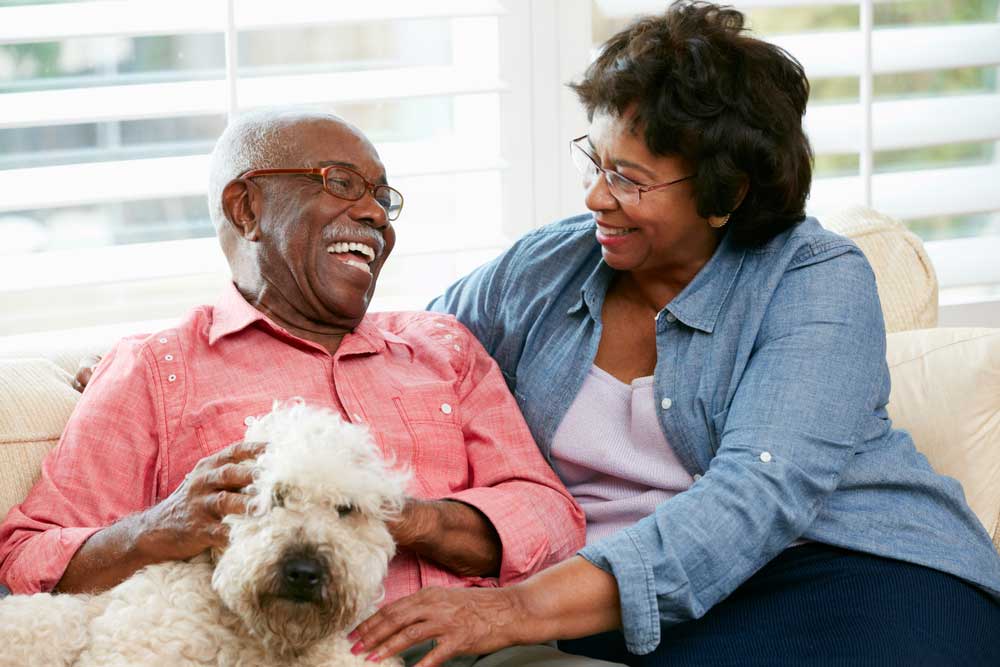Sandee’s Hysterectomy Story
Type of Hysterectomy: Laparoscopic
Age at Hysterectomy: 56
Location: Richmond, VA
About a year and a half ago, I was visiting a beautiful church in Tuscany when, once again, the gushing began. I found myself apologizing to God as I tried to rush out and change supplies before yet another “accident,” but no luck. And yet, it took me another year before I decided to talk to my gynecologist about it. At 56, my periods were still on schedule, and unbelievably horrid and long (sometimes going right from one month to the next non-stop). An endometrial biopsy showed nothing “scary,” but the ultrasound revealed what my MD referred to as “quite a crop of fibroids.” My belly had grown to about 12 month pregnancy size. Not wanting to rush anything, she told me to return in 90 days to see if things had changed. They had. It must have been a bumper year for fibroids. At that point, she talked about all the alternatives, the pros and cons of each, and helped me reach the decision I felt was best for me and medically necessary from her point of view: laparoscopic hysterectomy. My ovaries, which were still going strong, would stay, while the uterus, cervix and fallopian tubes would vamoose, along with their hangers-on, the fibroids.
While I didn’t get a second opinion (even though I’m usually one to do those things), I researched like a fiend, both about the procedure and my physician. She is known as an expert in laparoscopic gynecologic procedures, was always willing to listen to and respond to my often very detailed questions. In fact, she welcomed them, saying that she always was a little concerned when patients dove into this type of operation without question.
Surgery took longer than anticipated because some of the fibroids had grown outside the uterus. Began at 7:30 a.m. My husband, expecting a 2.5 hour surgery, was clearly nervous as things approached the 3.5 hour mark, but everything went well. I had general anesthesia (with a nice, soothing Versed pre-game “cocktail.”) As planned, I stayed in the hospital 1 night. It was aggravating at first, because I had compression stockings on plus these inflating/deflating compression wraps on my legs (to help with circulation), oxygen in my nostrils, a catheter in my urethra and an IV atop my left hand. (As you might surmise, a little claustrophobic.) Got the (wonderful) nurse to remove the oxygen and the “inflato-leg” things (OK, not their name, but you get the idea), and found out that as soon as I was able to ambulate — to walk to the bathroom myself, escorted by the dapper IV pole — I could have the catheter removed. WOO HOO. By midnight, I was using the potty like a big girl! The catheter was the worst part of recovery for me.
At 8 am, my MD stopped in to check and have a listen to my already-growling bowels. She said as soon as I passed gas, I could leave, and she’d leave the orders at the desk. By 8:30 I was doing my victory trundle down the hall to the nursing station to announce my success. (Apparently I could have just used the bedside call button, my bad.) Called for my family to pick me up and I was out the door by 9:30 am (confession — still in my jammies and slippers, but they were really cute and fuzzy). So, admitting office at 6 am Thursday, home again by 10 am Friday.
Honestly, I only ever took an opiod pain reliever because my MD wanted to make sure, before discharging me with a few (prn), that I would not have a bad reaction. Tylenol was fine for pain — and after the first day, there really wasn’t any nagging pain near my incisions, just a little burny, pully feeling that made you worry you were doing something that would risk your stitches.
Wound pain = 1. Shoulder pain = 7. Abdominal gas pain (until first bowel movement, on day 5) = 3-4. Yes, everyone tells you about the shoulder pain, but you don’t really believe it — it doesn’t seem logical, but boy is it real. A little hot water bottle set between my upper arm and my collar bone was essential, as was my electric heating pad. When used on the shoulder, the heating pad could be warmer and left on for a longer time. I really only used it on the lowest heat and the shortest time for my abdomen, and only atop a blanket.
Avoiding ALL gas-producing foods (and even stirring the bubbles out of my diet ginger ale), walking as much as possible (I actually went to a “gentle cardio” class at the Y four days after surgery), taking Colace and Gas-X regularly, with a single dose each of prune juice and Milk of Magnesia, made all the difference. By day 5, everything was back to normal and has stayed such (now on day 11).
Allowed to walk as much as I felt like it, on flat surfaces (e.g. 0 degree incline on tread mill), right away. Could drive as long as I felt under control and had no opioids in my system. By yesterday, I was doing up to 6 miles a day, taking between 11,000 and 13,000 steps. Won’t know til after my 2 week post-op, in 4 days, when I can add more. Still cannot lift more than 10 pounds, not that I don’t want to…in fact, forcing me to NOT do things is the absolute hardest part of this whole recovery.
Again, I’m only on day 11, but I feel fantastic and I look even better, at least where my abdomen is concerned. Put a couple Band-Aids over the little incisions, and it’s back to a two-piece bathing suit stomach (not like that’s going to happen, but I’m back in jeans and dresses I haven’t been able to wear for a few years because of the distention.)
Because I kept my ovaries and am premenopausal, I haven’t had any mood or hormonal issues at all. (OK, I was a little crabby when the microwave died, after I’d filled the freezer with meals prior to surgery, but really, that’s understandable.) I am sleeping great and feeling great. Some foods/drinks still are unappealing (for some reason, wine tastes and smells like cheap perfume and greasy foods or very aromatic foods are off-putting). I’ve lost 6-7 pounds (much of it fibroids) and will be celebrating when I can get back to my pre-surgery fitness routine (daily cardio for 45,” weights twice a week). I know it will be a while, and I am keeping my friend’s advice firmly in mind every time I want to add a little bounce to my step or “just try” a Zumba class: If you walk on concrete before it’s fully hardened, it’s ruined for a lifetime. If you let it harden (heal) completely, you can walk on it for a lifetime.
- Be sure your MD is really, really experienced with the type of surgery you’re having performed. Get his/her medical credentials. Find out how many of your type of surgeries he/she has performed. Google to see good/bad reviews from past patients. And it never hurts (and usually helps) to get a second opinion.
- Make sure you and your MD have reviewed all of the possible alternatives to hysterectomy, from embolization to myomectomy to watchful waiting. If hysterectomy still is the clear choice, make sure you and your MD decide on the correct surgical approach — laparoscopic surgery is much easier to recover from than traditional hysterectomy but is not appropriate in some cases.
- Because most hysterectomies are not emergency surgeries, take the time to get yourself as fit as possible prior to the surgery. Lose those 5-10 pounds if you can. Hit the gym regularly and really get in shape. Do core exercises and cardio. Yep, you should be breaking a good healthy sweat (no, not a hot flash) at least 3 times a week.
- Read up on foods/drinks that cause gas and make yourself (or ask friends/family to make) a bunch of dinners ahead of time. It is wonderful to be able to just grab something out of the freezer that’s healthy and won’t aggravate your gut.
- As soon as you CAN get moving, DO get moving, even if it’s just around your house. It will help you alleviate those awful shoulder gas pains, get your bowels moving again, reduce the risk of pulmonary emboli (scary and life threatening). Set yourself goals each day — start small, but keep going.
- Don’t fixate on the whiners or the worst-case-scenario stories you will undoubtedly encounter at work, among friends, or on the Internet. Yes, some people do have a heck of a time bouncing back. Yes, sometimes things do go wrong, something gets nicked or a follow-up surgery is necessary. But a LOT of people (I’m guessing the silent majority) do just fine. In fact, my MD says that in 18 years of doing this surgery, she’s never had a single patient say she was sorry she’d had a hysterectomy.
- LISTEN TO YOUR DOCTOR! While there is a lot of contradictory advice out there on recovery (when you can drive, lift, vacuum, bathe, have sex, etc.), you need to trust in the relationship you have with YOUR physician. Do what he/she says you SHOULD do. And, more important, DON’T do what he/she says NOT to do.







